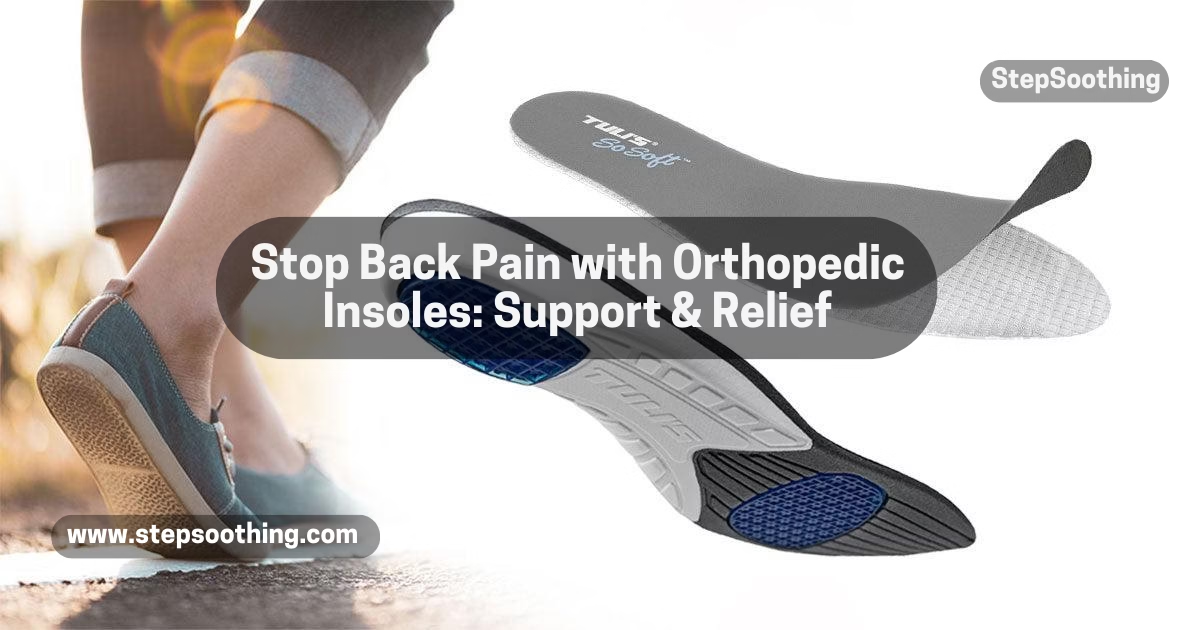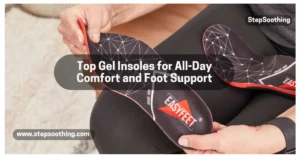Back pain is a widespread issue that affects millions of people, often stemming from poor posture, improper foot alignment, or biomechanical imbalances. Many wonder, can insoles help back pain? Research suggests that properly designed orthopedic insoles can provide essential support by correcting foot positioning, reducing strain on the spine, and improving overall posture. Whether addressing conditions like overpronation, flat feet, or improper weight distribution, insoles play a crucial role in enhancing comfort and alleviating back pain. This guide explores how insoles work, the science behind their effectiveness, and how to choose the right pair for long-term relief.
Can Insoles Help Back Pain
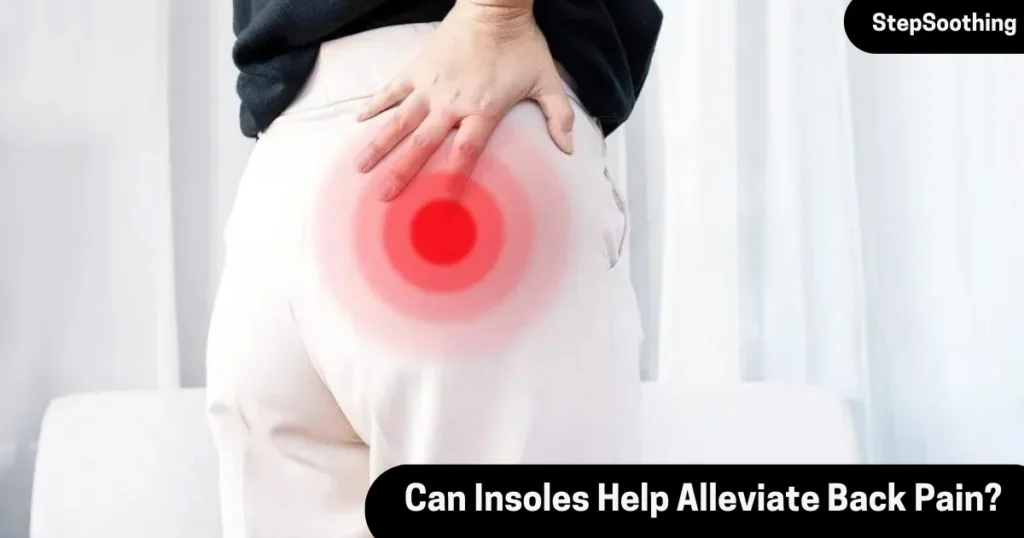
Stop Back Pain at Ground Level with Orthopedic Insoles
Back pain is a common frustration for many people, often caused by issues related to foot positioning and movement. Orthopedic insoles can help by absorbing shock, redistributing force, and correcting biomechanical issues that affect the spine and muscles. Conditions such as overpronation, supination, and fallen arches can alter lower limb and pelvic biomechanics, increasing the risk of injury and repetitive strain. Supportive insoles provide a stable base, distribute pressure evenly, and cradle the heel, reducing excessive lateral movement and aligning the body correctly. This optimized biomechanics reduces excess strain on the knees, hips, and back, alleviating pain.
Foot Orthotics for Chronic Low Back Pain
Medical research supports the assessment and use of foot orthotics to alleviate chronic low back pain (CNS-LBP). Studies indicate that orthotics can improve daily function and quality of life for individuals with non-neurologically compromised low back conditions, such as degenerative disc disease, lumbar osteoarthritis, sacroiliac joint syndromes, and spinal stenosis. These conditions often result in radiating leg pain, nerve root impingement, and muscle weakness. Foot orthotics can help restore proper alignment and reduce excess strain on the lower back.
Research on Shoe Inserts for Lower Back Pain
A 2013 study published in the Journal of Manipulative Physiological Therapy examined a group of 62 subjects with chronic non-specific low back pain caused by work-related injuries. Participants were divided into two groups: one receiving usual care and the other using customized foot orthotics in combination with an exercise therapy program and prescription analgesics. By the eighth week, those with foot orthotics experienced significantly greater improvement. This evidence highlights the measurable benefit of foot orthotics for individuals suffering from low back pain linked to foot and ankle conditions.
Another study published in the Journal of Orthopaedic & Sports Physical Therapy found that custom foot orthotics significantly reduced lower back pain compared to individuals not using them. Additionally, a National Institute of Health (NIH) study concluded that individuals with chronic lower back pain showed a 45% improvement in pain levels after using custom orthotics for three months.

What Causes Lower Back Pain?
A primary cause of lower back pain is poor body posture, particularly from prolonged sitting at a computer desk, watching TV, or slouching at work and home. This places excess strain on the muscles of the shoulders, upper back, and lower back. Over half of the population experiences overpronation, which leads to the feet and ankles rolling inward, causing the legs to rotate and the pelvis to tilt forward. This alters spinal curvature, creating muscle tension and pain in the lower back. Identifying and correcting foot posture can alleviate these issues.
Orthotic Treatment for Low Back Pain
Foot orthotics, including corrective shoe inserts, can reduce excess pronation and restore natural gait. A study in the United States found that participants with chronic low back pain experienced a 68% improvement in symptoms when fitted with foot orthotics. These inserts help control excessive twisting in the lower legs, prevent forward pelvic tilt, and improve overall body posture. By relieving tightness and tension in the lower back muscles, orthotics provide an effective non-invasive treatment option.
Choosing the Right Insoles for Back Pain Relief
Custom vs. Off-the-Shelf Insoles
While store-bought insoles offer convenience and affordability, custom-made orthotics provide better alignment and support for individuals with severe back pain or unique foot structures. Research suggests that custom orthotics are 35% more effective in reducing back pain than generic insoles. Consulting a podiatrist can help determine the best option.
Key Features to Look For
When choosing insoles, consider:
- Arch support: Ensures even weight distribution and reduces strain.
- Cushioning: Memory foam molds to the foot, while gel absorbs shock.
- Material durability: High-quality materials last longer and provide better support.
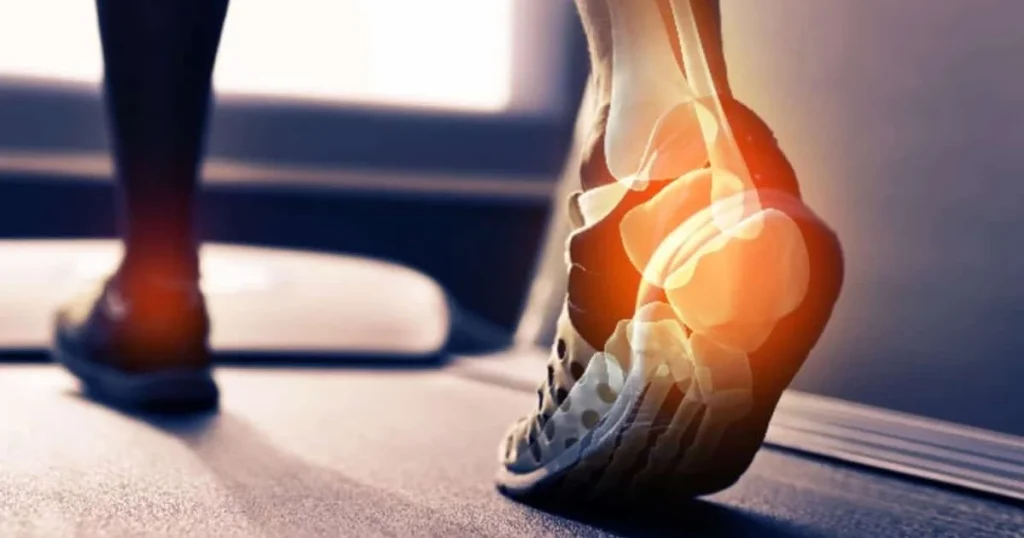
Additional Benefits of Insoles
Improved Posture and Spinal Alignment
By correcting foot positioning, insoles encourage proper posture, reducing strain on the spine and lower back muscles. A posture analysis study found that 60% of individuals using corrective insoles showed noticeable spinal alignment improvements within eight weeks.
Better Stability and Balance
Insoles help improve balance and stability, especially for individuals with conditions like sciatica or herniated discs. By evenly distributing weight, they reduce the risk of falls and misalignment issues.
Using Insoles for Daily Comfort
Everyday Wear
Modern orthopedic insoles are designed for all-day comfort, making them ideal for long-standing work environments. A survey of healthcare professionals and retail workers found that 78% reported reduced fatigue and lower back pain after consistently using insoles for six weeks.
Fit for Any Shoe Type
Insoles come in different shapes and sizes, fitting athletic shoes, work boots, and formal footwear. Some insoles are transferable between different shoes for convenience.
Common Concerns About Insoles
Initial Adjustment Period
When first using insoles, feet may feel strange or uncomfortable due to the added support. Gradual wear time helps the feet adapt naturally.
Cost vs. Long-Term Benefits
While high-quality custom orthotics may be expensive, they provide long-term relief and prevent worsening pain. There are also affordable over-the-counter options available for mild discomfort.
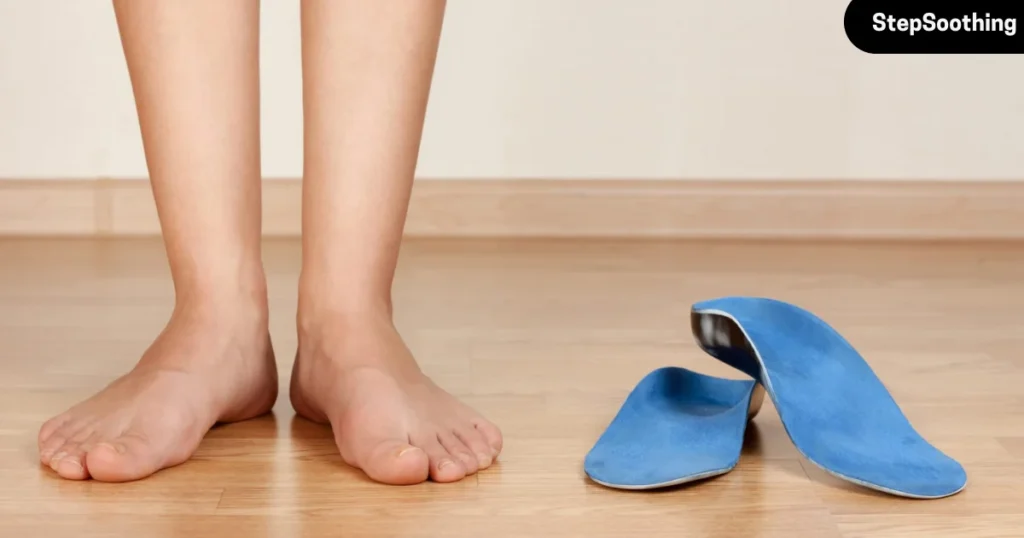
Get Expert Advice
Consult a Professional
Before choosing orthotic insoles, individuals with chronic pain or medical conditions should consult a podiatrist or physiotherapist to determine the best type of insole for their needs.
Customization for Maximum Support
For those needing specialized support, custom-made orthotics offer the best fit and function. A podiatrist can conduct a foot assessment to create insoles tailored to an individual’s needs.
Making the Most of Your Insoles
Care and Maintenance
- Regular cleaning keeps insoles effective and hygienic.
- Replacement every 6-12 months ensures continued support.
Gradual Usage
Start by wearing insoles for short periods and gradually increase to full-day use to prevent discomfort.
Myths and Facts About Insoles
Myth: Insoles Are Only for Athletes
Fact: Insoles benefit everyone, including office workers, teachers, nurses, and individuals with back pain from prolonged standing.
Myth: One Size Fits All
Fact: Foot shapes and needs vary, making customized or properly fitted off-the-shelf insoles the best choice.
Using Insoles as Part of a Comprehensive Plan
Combining with Other Treatments
Insoles work best alongside exercise, posture correction, and proper ergonomic adjustments to provide a holistic approach to back pain relief.
Final Thoughts: Invest in Your Health
Insoles play a critical role in reducing lower back pain by supporting foot alignment, improving posture, and absorbing shock. Whether dealing with occasional discomfort or chronic pain, integrating orthopedic insoles into daily routines can improve comfort, mobility, and overall well-being.
Related Articles:
Benefits of using Insoles for foot health
Science says Insoles can give real Relief from Knee Discomfort
Additional Resources :
Posture Analysis Study – Found 60% of people using corrective insoles showed spinal alignment improvements within eight weeks.
Journal of Orthopaedic & Sports Physical Therapy – Research on how foot orthotics help reduce lower back pain.
National Institute of Health (NIH) Study – Found a 45% improvement in chronic lower back pain with custom orthotics.
Journal of the American Podiatric Medical Association – Clinical trial showing 70% of participants reported reduced back pain after six weeks of insole use.
Journal of Manipulative Physiological Therapy (2013 Study) – Evaluated how custom foot orthotics improved chronic non-specific low back pain in workers.
People Also Asked
What Type of Shoe is Best for Lower Back Pain?
Supportive shoes with proper arch support, cushioning, and shock absorption are best for lower back pain. Orthopedic shoes or running shoes with stability features can help reduce strain.
What Support is Best for Lower Back Pain?
Lumbar support, ergonomic seating, and orthotic insoles help maintain spinal alignment and relieve pressure on the lower back.
What Are the Side Effects of Wearing Insoles?
Some people experience initial discomfort or muscle soreness as their feet adjust. This typically subsides within a few weeks of use.
What is the Best Pain Relief for Back Pain?
A combination of physical therapy, stretching, proper posture, ergonomic support, and orthotics can effectively reduce back pain.
